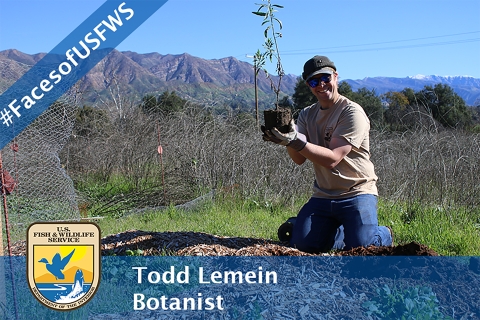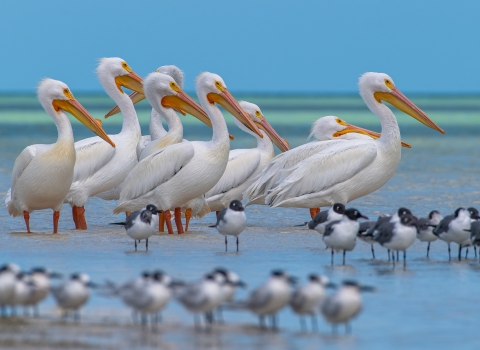We like to share the insider's scoop about the people who carry out the important work of protecting and conserving fish, wildlife, plants, and their habitats along the central and Southern California coast. Meet one of our newest botanists, Todd Lemein:
What led you to a career with the U.S. Fish and Wildlife Service?
A lot of hard work and positions broadly within the field of ecology, including vegetation mapping, rare plant conservation, invasive species invasive species
An invasive species is any plant or animal that has spread or been introduced into a new area where they are, or could, cause harm to the environment, economy, or human, animal, or plant health. Their unwelcome presence can destroy ecosystems and cost millions of dollars.
Learn more about invasive species control, wetland restoration, estuary dynamics, and a smidge of oceanography.
What role do you play within the agency?
I’m a botanist in the listing and recovery division of the Ventura Field Office which means that I’m working with partners in the public and private sectors to recover listed plant species, and developing adaptive management strategies and recovery actions.
Where did you go to school and what did you study, and/or for which military branch did you serve and in what capacity?
I received my Bachelor of Science at University of California Santa Barbara in Ecology and Evolution, and focused on plant and marine invertebrate ecology. I did my dissertation work at Oregon State University and studied the feedback responses between estuary vegetation, sediment accumulation, and sea level rise, as well as classifying and mapping wetland vegetation communities throughout the Great Lakes region.
What is the coolest species of plant or animal that you/the Service protects, conserves, restores or educates about? And why?
I have a big soft spot for Hickman’s potentilla (Potentilla hickmanii) because it was the first Federally Endangered plant that I worked with for a significant amount of time. It is a small yellow flowering plant in the rose family (but it would never be mistaken for the classic image of a rose). It is extremely limited in range and is known from only two natural populations. It enjoys coastal terraces and bluffs, much like the rest of us.
Is there a particular project that you have been involved that you are particularly proud of the outcome?
Recently, I was surveying for a very rare listed plant; small, hard to see if you don’t know what you’re looking for, and I was approached by an older gentleman. He asked if I knew that there was an endangered plant around where we were and I said yes, that that was what I was looking for. He said he had been looking for it for a decade and had never had any luck and so I offered to show it to him. When we found it he seemed so happy and stood up, turned around, and raised both hands in the air and yelled “YES!” Then he shook my hand and went about his day. It was fantastic.
What are you most excited about for the rest of the year? Is there a project you are interested in or something you would love to learn?
We’re doing a lot of great work with partners for a number of species including Monterey gilia , Hickman’s potentilla, Coastal dunes milk-vetch, Scotts Valley polygonum, and Ben Lomond wallflower and others. Everything from restoration and reintroductions to creating management strategies, and rediscovering past occurrences and discovering new occurrences.
What do you like to do on your free time?
Spending time with my family and getting outdoors.




